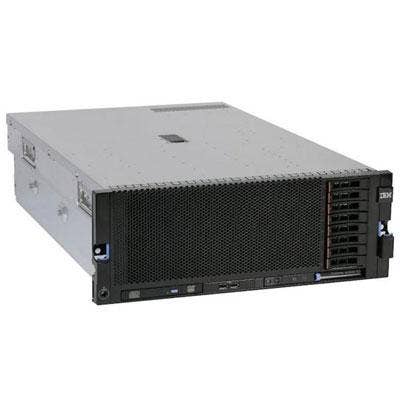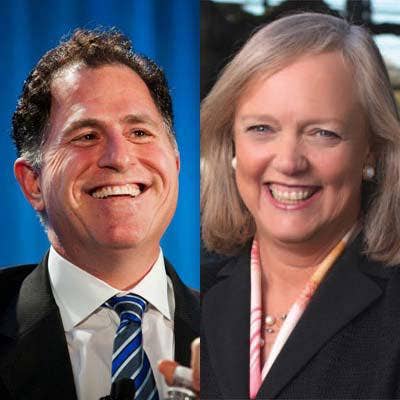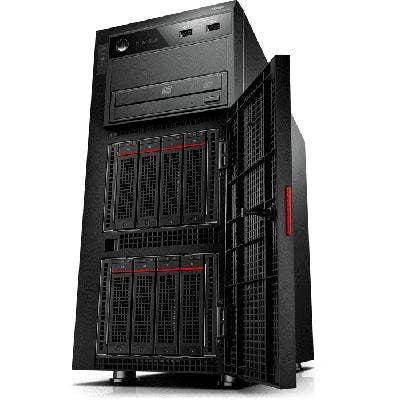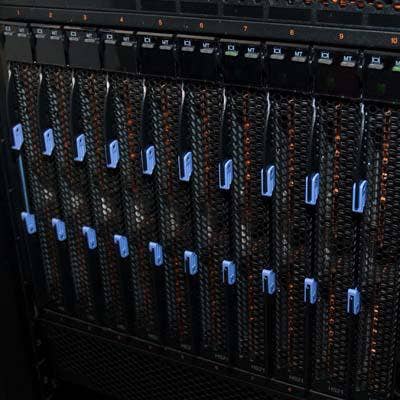Lenovo's Channel Chief Q&A: What's Next After IBM's Server Buy

Times Are A Changin'
On Wednesday, Chris Frey's job gets a lot harder. That's when Frey, Lenovo's vice president of North American commercial channels, officially inherits thousands of System x partners who are eager to learn how Lenovo will run things differently than the former brand owner, IBM.
On Monday, CRN caught up with Frey, where he outlined what channel partners can expect over the next 90 days and how he plans to spark renewed partner interest in the System x, Flex Systems and iDataPlex servers.

What is your first order of business for the new, bigger Lenovo channel?
From a strategic and philosophic point of view, Wednesday is our first day we'll be able to start moving forward with the System x business. What you'll see on Day 1 is going to market with System x in a manner the market is used to. We are going to be moving fast and use speed as a value proposition working with our channel partners.
What you'll see is a unified approach with our partners where PC and System x partners will both be part of the same channel. This new chapter in Lenovo's channel starts with the tagline, "one Lenovo with one channel."

What do you mean by 'one Lenovo, one channel?'
We will have one coverage model. Partners will be covered by PC account reps as well as System x account reps, but we will have one coverage model. On Oct. 1, we'll have one compensation plan. So, in North America for the PC sellers and the System x sellers they'll be on one compensation plan. And partners will be compensated for selling the combined product portfolio.
Lenovo wants to be known for having one program and for living the philosophy of being simple, consistent, predictable and profitable with our partners.

Will legacy System x partners be treated differently than Lenovo's PC, ThinkStation and storage partners?
We are also going to focus on all partners, not a subset. We are not going to go out into the marketplace and start profiling partners on what we think their competencies are. We won't put partners in different siloes. We are going to actually go out to the partner community and meet with partners to understand what their specialties are.
Our belief is, when a manufacturer approaches multiple brands with multiple PNL owners, with multiple coverage models and multiple sets of programs, that does not create an open market for partners. We believe if we have partners that want to sell PCs, they can sell PCs. If we have partners that want to sell servers, they can sell servers. If they want to sell both, they can sell both.

Day 1, how will things change?
On Day 1 there won't be a lot of difference with our programs because, honestly, we have not had a lot of time to dig into the details of the program or collaborate the System x team. Over the course of the next 90 days, and definitely over the next 180 days, we will spend a lot of time to make sure that our programs are stackable and that our programs are easy to understand for both the PC and System x partners.

How does the channel leadership change with the addition of IBM's channel team?
Around Oct. 1, we'll be making some organizational announcements inside the North American channel business. Those changes will reflect our push to scale both our PC business and our System x business. On Wednesday, we'll clarify who those people are.
We will name new executives and sales directors in the weeks ahead. We'll also be identifying core people that will be part of a transition team that will help with the move of IBM's x86 server business to Lenovo.
The idea is to transition quickly at the top and have those changes impact the market ASAP so we can get to where we need to be -- dealing with this IT ecosystem as an ecosystem and not as specialized siloed partner communities.
Once we get there, we believe all partners are going to be interested in the entire Lenovo portfolio.

Will Lenovo partners have to wait for access to former IBM assets, such as System x?
Lenovo has 11,000 partners that resell PCs on a regular basis. On Day 1, all those partners will be authorized to start selling System x. We have 3,000 partners that sell our Think Servers today. So this obviously helps their portfolio, making it more rich and diverse.
On the flip side, System x partners gain access to Lenovo's Think Server and PC line.

Are you going to actively court Dell and HP partners to sell Lenovo? If so, why should they?
We are always looking to recruit partners that want to resell products on our behalf, and we are going to pursue that in a very aggressive fashion.
Why go with Lenovo? I'm not going to comment on our competition. We will let our results -- and market share -- speak for itself. We have a business that goes from the tower business, the rack business and blade business, the PureFlex. We are going to go after all of those markets, not just the data center.

The channel buzz among partners is that Lenovo will be boosting margins as a way to kick off the new System x business opportunity. Are the rumors accurate?
Until Oct. 1, when I have an opportunity to review the program spend and the PNLs, I can't really comment on whether or not there is going to be more margins or not. But I can promise you this. We have always been known for rewarding our business partners for selling our products on our behalf despite any acquisition. That will continue.

How different are the IBM System x culture and the Lenovo culture? Will they mesh?
Culturally speaking, myself and many others that are here at Lenovo today actually came from IBM. So, the culture of these two companies, I anticipate, will mesh nicely. Remember, this isn't the first time Lenovo and IBM have come together.

How does Lenovo's product line card complement and/or overlap the System x portfolio?
Lenovo has a very healthy SMB community, and we are going to leverage that partner community to the fullest with System x. On the high end of Lenovo's channel partner community are SMB ThinkServer partners who will naturally gravitate toward growing their business into the midmarket with System x.
On the other side, there will be System x customers that will see room for growth in their business by selling into SMB with ThinkServers.
Ultimately, some partners will stick with selling PCs. We have a very nice network of properties I think will result in significant growth.

Do you need more data center partners, and how do you enable the ones you have to move higher up the enterprise stack?
Ultimately, if a business has interest in bringing additional value to its customers by executing in the data center, by all means it's our responsibility to go train them to go do that.
What you will find with our hand-to-hand combat kits is we do a lot of on-site training with our partners. We are constantly working with partners on how they can bring additional value and solutions to customers.
On the flip side, there are plenty of partners that don't want to be in the data center. And they prefer being in the high-volume PC business. We think there is still plenty of room for data center and PC partners.
Again, we want to deliver partners' opportunities based on their business model, not what we think their business model should look like.

What are you telling customers and competitors who have raised security concerns related to Lenovo's Chinese roots?
I won't talk about what others are saying, but what I will share is what we are focused on.
One hundred percent of our federal business goes through business partners. We already have partners selling into the government for us and with us.
The reality is we do a tremendous amount of business with the federal government. Since 2009, we have done over $1 billion with the federal government. We have deep relationships there. We have a lot of customers there.

What are Lenovo's goals for the first 90 days?
We will continue to maintain the scale that we already have, and take advantage of Lenovo's supply chain and scale with legacy IBM System x.
Partners can also expect that we will integrate IBM assets very fast. We will have one Lenovo with one distribution model for both PC and System x servers, which we think is important for partners.
We will focus on the partner experience and make sure we are known as a best-in-class manufacturer, and that the experience of our partners is simple and easy, predictable and consistent.

What are your biggest challenges meshing IBM's System x channel partner community into Lenovo's channel?
The biggest challenge in anything of this magnitude is clearly communicating what your integration plans are. We are going to make sure our partner community is ahead of those plans and that there are no surprises.
We want to make sure we only make commitments that you can keep versus making false promises that will hurt the trust we've made with partners over the last five years.

What is the time line on fully integrating IBM's hardware, software and channel programs into a bigger, better Lenovo channel?
We will be completely integrated by April [2015]. As far as the processes, once the acquisition is complete, we will begin the processes of merge and purge. But as soon as we know the specifics of the IBM program, we can begin to integrate.
Our position is, wherever integration can happen, it will happen. Wherever there is a synergistic relationship between 'the one Lenovo, one channel philosophy,' it will happen.

What's your message to partners on Day 1 of acquiring IBM's x86 server business?
This is a major milestone for the Lenovo channel. Now partners have an end-to-end portfolio that includes tablet, PCs and servers to aggressively go after the data center. It means our new partners will be able to take advantage of Lenovo's scale and go-to-market focus on speed. Our partners now have an opportunity to make more money.